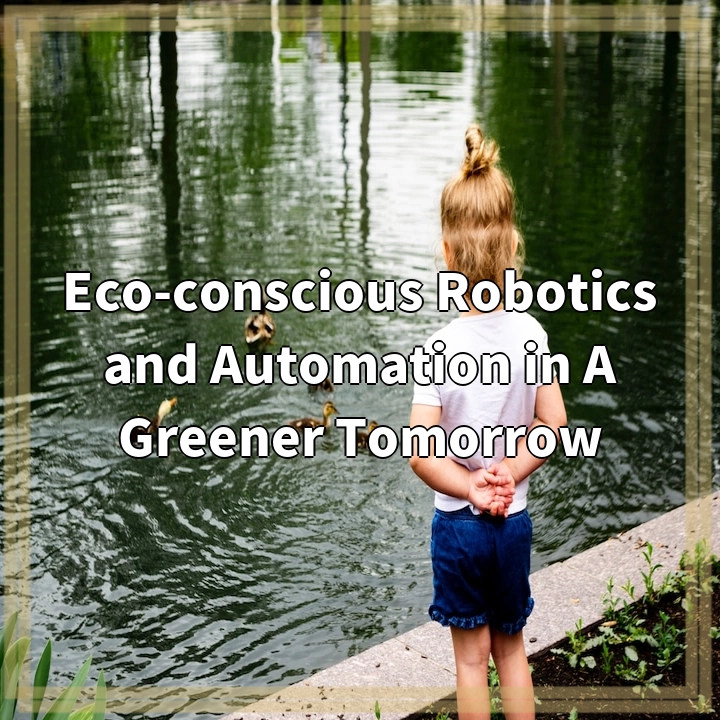
What is Eco-conscious Robotics and Automation?
Eco-conscious robotics and automation refer to the integration of technology, specifically robotics and automation processes, to promote environmentally friendly practices and contribute to a greener future. This approach focuses on minimizing the ecological footprint of industrial processes, reducing energy consumption, and optimizing resource usage.
Real-world Problems Associated with Eco-conscious Robotics and Automation
Eco-conscious robotics and automation address various environmental challenges and offer potential solutions. However, there are also some real-world problems that need to be considered:
1. E-waste Management:
The increasing use of robotics and automation technologies can lead to the generation of electronic waste or e-waste. It is crucial to develop proper e-waste management systems to ensure the responsible disposal and recycling of electronic components.
2. Energy Consumption:
While eco-conscious robotics aims to reduce energy consumption, there is a need to strike a balance between achieving efficiency and ensuring optimal performance. Finding ways to reduce the energy demand of robotics and automation systems without compromising productivity is critical.
3. Ethical Considerations:
The implementation of robotics and automation in various industries raises ethical questions related to job displacement and economic inequality. It is important to address the social implications of adopting these technologies and ensure a just transition for workers.
4. Dependency on Finite Resources:
Many components used in robotics and automation systems rely on finite resources such as rare earth metals. Finding sustainable alternatives or improving recycling and reuse practices is essential to reduce the environmental impact and ensure the longevity of these technologies.
5. Lifecycle Assessment:
Understanding the full lifecycle of robotics and automation systems is crucial for identifying potential environmental impacts. This includes considering factors such as raw material extraction, manufacturing processes, energy usage during operation, and end-of-life disposal.
6. Innovation and Continuous Improvement:
As technology evolves, eco-conscious robotics and automation need to keep up with the latest advancements to remain effective in addressing environmental issues. Encouraging research and innovation in this field is vital to stay ahead of emerging challenges and develop sustainable solutions.
In conclusion, eco-conscious robotics and automation offer great potential in creating a greener future by minimizing environmental impacts. However, it is important to address the real-world problems associated with their implementation, such as e-waste management, energy consumption, ethical considerations, dependency on finite resources, lifecycle assessment, and the need for continuous improvement.

Possible Solutions for Eco-conscious Robotics and Automation
Addressing the real-world problems associated with eco-conscious robotics and automation requires thoughtful solutions that balance environmental concerns with technological advancements:
1. E-waste Management:
Develop efficient e-waste management systems to promote responsible disposal and recycling of electronic components. Encourage the use of environmentally friendly materials and design for disassembly to facilitate recycling.
2. Energy-efficient Designs:
Focus on optimizing energy consumption in robotics and automation systems by improving design efficiency and using energy-saving components. Emphasize the use of renewable energy sources and smart energy management systems to minimize reliance on non-renewable resources.
3. Social Impact Mitigation:
Implement measures to mitigate the social impact of robotics and automation, such as providing retraining and upskilling programs for displaced workers. Encourage collaboration between industry and government to develop policies and programs that promote a just transition.
4. Sustainable Materials and Manufacturing:
Promote the development and use of sustainable materials in robotics and automation. Explore alternatives to rare earth metals and invest in research and innovation for eco-friendly manufacturing processes.
5. Lifecycle Assessment and Circular Economy:
Conduct comprehensive lifecycle assessments of robotics and automation systems to identify areas for improvement and minimize environmental impacts throughout their lifecycle. Implement circular economy principles by emphasizing repair, refurbishment, and recycling of components to reduce waste.
6. Continuous Research and Innovation:
Encourage ongoing research and innovation in eco-conscious robotics and automation to stay ahead of emerging challenges. Foster collaborations between academia, industry, and policymakers to develop sustainable solutions and support the growth of an eco-friendly robotics sector.
In summary, the solutions to the real-world problems associated with eco-conscious robotics and automation include efficient e-waste management, energy-efficient designs, social impact mitigation, sustainable materials and manufacturing practices, lifecycle assessment and circular economy principles, and continuous research and innovation. Implementing these solutions will help contribute to a greener tomorrow and ensure the long-term environmental sustainability of robotics and automation technologies.















